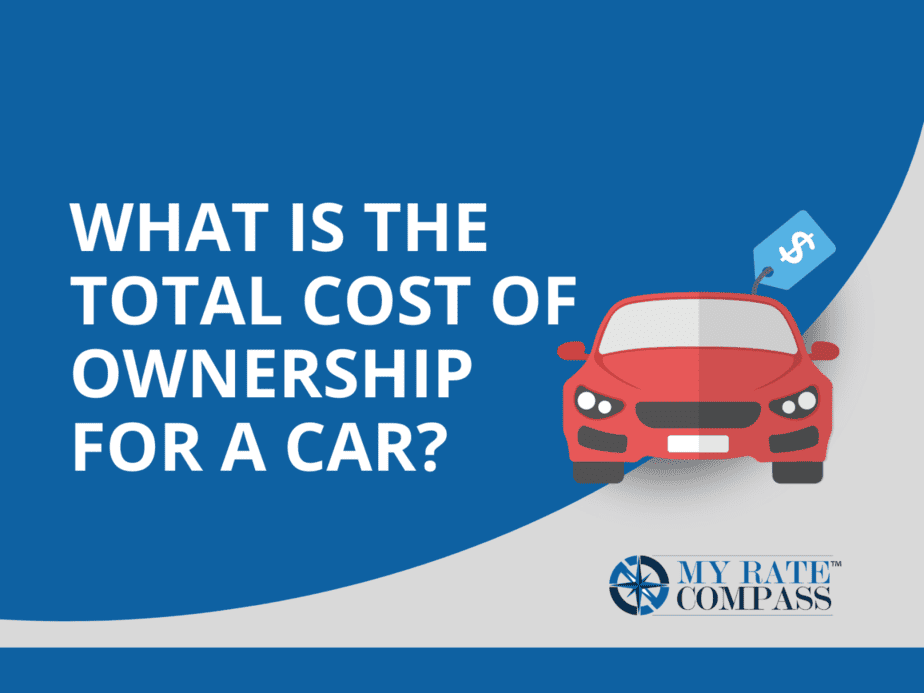Are you wondering if you can have more than one life insurance policy? If so, you’re not alone. Many
people are unsure whether they can have multiple policies, what the benefits
are, and how it might affect their coverage.
In this article, we answer your questions about life
insurance, whether you can have multiple life insurance policies, the pros and
cons, and common misconceptions about having multiple life insurance policies.
Quick Article Guide:
● What Are Life Insurance Policies?
● The Pros And Cons Of Having Multiple Life Insurance
Policies.
● Common Misconceptions About Having Multiple Life
Insurance Policies.
● How To Manage Multiple Insurance Policies.
If you want to learn more about this financial decision to
see if it’s right for you and your family, read on!
An Overview of Life Insurance Policies
Before delving into whether you can have multiple life insurance policies, first, let’s review what exactly it means to have life insurance and the different types that exist:
Life insurance is a type of insurance that pays out a sum of money to your beneficiaries in the event of your death. It provides financial protection and peace of mind to your loved ones and ensures they don’t suffer financial consequences after your death, especially if you were the breadwinner.
There are different types of life insurance policies, including the following:
● Term Life Insurance: This type of policy provides coverage for a specified term, typically 10, 20, or 30 years. It offers a death benefit if the insured passes away within the term. Term life insurance is generally more affordable and ideal for individuals with temporary coverage needs.
● Whole Life Insurance: This insurance covers an entire lifetime, and builds up a cash-value component. This type of policy offers more long-term financial security and can be an investment vehicle.
● Universal Life Insurance: Universal life insurance is a flexible policy that allows you to adjust the death benefit and premium payments throughout the policy’s duration. It provides a cash value component that earns interest over time, allowing you to build savings while being insured.
● Variable Life Insurance: This insurance allows you to invest some of your premium payments into certain investments, such as stocks, bonds or mutual funds. The policy’s cash value changes based on the performance of your investments.
Now that you have an overview of the types of life insurance, let’s dive into why it might be beneficial (or not) to have multiple life insurance premiums.
Why Get Multiple Life Insurance Policies?
There are a few reasons you might consider getting multiple life insurance policies. Including the following:
● Increases total coverage amount: If you have multiple policies, the death benefit from each policy can be combined, resulting in a higher payout to your beneficiaries. This is useful if your current coverage is insufficient to cover things like funeral costs.
● Tailoring coverage for specific goals: You can diversify your insurance coverage to include specific benefits. For example, you may have a term life insurance policy that provides coverage until your children are financially independent, and a whole life insurance policy that acts as a long-term investment and provides a death benefit regardless of when you pass away.
● Diversification: By spreading your coverage across multiple policies, you reduce the risk of being left without coverage if one policy lapses or becomes insufficient.
● Laddering: Since term life insurance is much cheaper than whole life insurance, some people take out several term policies with differing timelines to ensure their family is covered regardless of circumstances.
● New relationships: If your close relationships change, you may want to take out an extra life insurance policy to cover your new loved ones after your death.
While these benefits may look good, there are a few disadvantages of having multiple insurance policies to keep in mind.The Cons of Having Multiple Life Insurance Policies
● Cost: Multiple policies mean multiple premiums. Before committing to another insurance policy, ensure you can cover the monthly premiums.
● Complicated Management: Managing multiple policies can be challenging, especially when keeping track of premium payments, policy details, and beneficiaries.
● Overlapping Coverage: It’s crucial to review the terms and conditions of each policy to avoid overlapping coverage, which can lead to unnecessary expenses.
If you’re seriously considering a second life insurance policy or want to sign up for two simultaneously, remember to research multiple options and see if you cannot meet your insurance needs with just one life insurance policy.
How to Determine the Right Amount Of Coverage
Determining the right amount of life insurance coverage is crucial, whether you have one policy or multiple policies. The coverage amount should be sufficient to meet your beneficiaries’ financial needs in your absence. To calculate the appropriate coverage amount, consider factors such as:
● Outstanding debt: If you have outstanding debt, leaving a life insurance sum to cover debt after your death will ensure that any property or assets you leave behind are not liquidated to cover your debt.
● Mortgage: If you’re paying off a mortgage at the time of death, life insurance can help your beneficiaries keep up with mortgage payments in your absence. This ensures that your bank doesn’t foreclose on your property.
● Future education expenses: If you have children or grandchildren who still need to study, you may want to leave a sum to fund their studies in your life insurance.
● Income replacement: If your beneficiaries were financially dependent on you, a life insurance payout can act as income replacement for a while.
● Funeral Costs: Remember to include funeral costs in your life insurance to ensure your family doesn’t need to scramble to collect funeral funds after your death.
It’s advisable to work with a financial advisor or insurance agent who can guide you through the process of determining the right coverage amount.
How to Manage Multiple Life Insurance Policies
Managing multiple life insurance policies requires careful organization and attention to detail. Here are some tips to help you effectively manage your policies:
● Keep Detailed Records: Maintain a record of all policy documents, premium payments, and contact information for your insurance providers.
● Automate Premium Payments: Set up automatic payments for your premiums to ensure they are paid on time and avoid the risk of policy lapses.
● Regularly Review Policies: Look over your policies now and then to ensure they are still up to date and cover what you need them to cover. Make adjustments if your circumstances change.
● Inform Beneficiaries: Keep your beneficiaries informed about your policies and provide them with the necessary information to make a claim.
Common Misconceptions about Having Multiple Life Insurance Policies
You might find it strange that people consider taking out more than one policy and no doubt have questions. There are several misconceptions around this topic, so let’s debunk some of the most common myths:
● Only The Wealthy Can Have Multiple Policies: Having multiple life insurance policies is not limited to the wealthy. It’s a financial strategy that can benefit anyone looking to increase their coverage or customize their policies.
● Multiple Policies Equal More Payouts: While having multiple policies can increase your total coverage amount, it doesn’t necessarily mean your beneficiaries will receive multiple payouts. The death benefit is typically paid once, regardless of how many policies you have.
● Having Multiple Policies Is Fraudulent: As long as you provide accurate information during the application process and pay your premiums, having multiple policies is a legitimate strategy.
Now that you’re well-informed on how multiple insurance policies work, their pros, cons, and misconceptions, let’s dive into how to choose the best ones.Common Misconceptions about Having Multiple Life Insurance Policies
You might find it strange that people consider taking out more than one policy and no doubt have questions. There are several misconceptions around this topic, so let’s debunk some of the most common myths:
● Only The Wealthy Can Have Multiple Policies: Having multiple life insurance policies is not limited to the wealthy. It’s a financial strategy that can benefit anyone looking to increase their coverage or customize their policies.
● Multiple Policies Equal More Payouts: While having multiple policies can increase your total coverage amount, it doesn’t necessarily mean your beneficiaries will receive multiple payouts. The death benefit is typically paid once, regardless of how many policies you have.
● Having Multiple Policies Is Fraudulent: As long as you provide accurate information during the application process and pay your premiums, having multiple policies is a legitimate strategy.
Now that you’re well-informed on how multiple insurance policies work, their pros, cons, and misconceptions, let’s dive into how to choose the best ones.
Tips for Choosing Multiple Life Insurance Policies
If you’ve decided that having multiple life insurance policies is the right choice, here are some tips to help you choose the best combination of policies:
● Assess Your Needs: Evaluate your financial situation, goals, and coverage needs. Determine the types of policies and coverage amounts that align with your objectives.
● Shop Around: Compare quotes from different insurance providers to find the most competitive premiums and policy terms. Consider working with an independent insurance agent who can provide unbiased advice and access to multiple carriers.
● Read the Fine Print: Carefully review the terms and conditions of each policy, paying attention to exclusions, limitations, and any additional riders or benefits.
● Seek Professional Advice: Consult with a financial advisor or insurance agent who specializes in life insurance.
Final Thoughts
It’s fairly common and more possible to have multiple life insurance policies. Having multiple policies can ensure that your loved ones are fully covered and every eventuality such as funeral expenses, debt repayments, and mortgage payments are covered after your death. This will provide you with peace of mind and help your family recover and financially cope after your death.
Remember to do your research, consult with a financial advisor, and weigh your options carefully before committing to more than one life insurance policy. Ultimately, with the right planning and forethought, your loved ones will be cared for even after you are no longer around.




